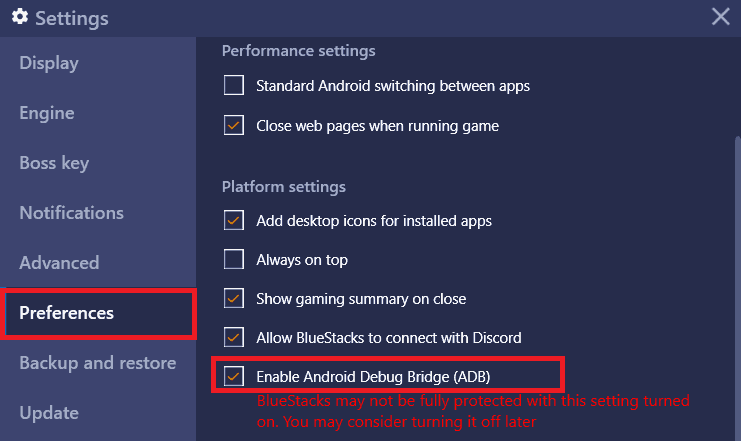

Log.v(“value loop_line_color”, “”+ loop_line_color) Try type like this “tag:value.loop_” without quotes on search “verbose”. The simple method to tracking variable via log.v On Android : Screenshoot create Points and Line with Points via Eclipse n Bluestacks Screenshoot “create Points and Line with Points” via Eclipse + Bluestacks : To Running the program, Click “File–>import” On Eclipse (don’t forget to checked “Copy projects into workspace”).Įnjoy with Android OpenGL ES code, especially for your research.Īny Suggestions, Question and Other, Send to My Email : Me If I’m Wrong (CMIIW) Pardon Me If I’m Wrong (PMIIW).
#Connect bluestack with android studio for mac download#
Note : “After Download it, To Extract File (1_1Introduction_To_OpenGL_ES.zip), You must Rename Extension *.doc to *.zip”

To download all source code, please click link below :Ĭode to create Points and Line with Points > Note : In addition to “DDA Algorithm”, you can also use the “Bresenham’s line algorithm,” or using other techniques to be implementation utilize OpenGL ES on Android. And the direction can be “top –down” or “right –left” or form a certain angle. X = an independent variable that determines the value of y.Ĭ = a constant, intercept or shift or bias of the “equation” on the x-axis or the y-axis. Y = is the dependent variable, which will be calculated by the value of the input value x. (1) Then for generate all points that you will draw, will be quite simple if you use “Looping for” could be carried out based on the lower bound and upper bound for interval the value of x =, or that it run with it the value of interval y only. Example is the two points (x1, y1) and (x2, y2) which will be used to calculate the value of the gradient (m) or the slope of the line, with the following formula below :

Here we use the equation of a straight line calculated from two points that are known to use “Digital Differential Analyzer (DDA) Algorithm“.

Y ou only need to specify the points in the array, either manually or using the iteration program (Looping for) to generate it. To create/ make the dots/ points in the OpenGL ES 1.0 or OpenGL ES 2.0 on Android it’s very simple. And it is actually, anything complex object is can be representing/ created by combining these primitive forms. “ Primitives Objects” is a simple/basic geometry that consisting of : points, lines, rectangles (quads), and triangle. Here we give some examples of primitive objects that will be created using the OpenGL ES 10/20 OpenGL ES on Android devices : In this tutorial using the concept of Primitive Objects on Computer Graphics is without any shader or OpenGL Shading Language (GLSL), it’s pure only using OpenGL ES elementary syntax. Primitives objects is an important part in computer graphics, because by understanding it, meaning you will be able to have an overview of how when creating objects that are very complex. If the computer vision is to change the image / graphic into a information, while computer graphics is to convert the information into a form of visualization images / graphics. Or we call it that computer graphics, it’s the inverse of computer vision. Create Primitive Object Using OpenGL ES on Android (Part 1) :Ĭomputer graphics is the part of computer science that is relating to create, manage, processing and manipulation of images (visual) digitally.


 0 kommentar(er)
0 kommentar(er)
